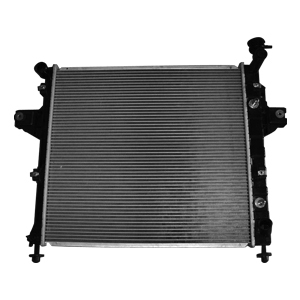News
Heat Dissipating Problems of Racing Cars
If the rear of a racing car continuously releases thick light blue smoke during a competition, it is likely that the water tank bursts. This happens because the engine is too hot. When the engine operates with overload, the aluminum racing radiators can not meet the auto oil cooler requirement, which leads to lubrication failure, and thus the water tank bursts. Water tanks of F1 racing cars are more likely to burst than those of ordinary cars. Here are the two factors leading to the burst. First, some car-racing teams unreasonably pursuit high rotating speed of the engine in order to increase driving force, but the auto cooling accessories can't meet the cooling requirements of long-term limiting operation. Second, some racing cars overuse their engines in the competition, racing at high speed with the gear lever at a low gear, and idling for too long and so on, which puts the engine in overheat state and leads to the burst of its water tank.

The cooled water and engine oil dissipate their heat through the radiators installed in both sides of the car. Some racing cars are symmetrically installed with two radiators of water-oil separation in the two sides of the car. Others are installed with a water radiator in one side, a water-oil separating radiator in the other side, and the two radiators are not symmetric. The purpose of these layouts is to reduce the number of pipes applied to the minimum and thus reduce the load of the car.
The principle of heat dissipation of racing radiators is basically the same as that of ordinary car radiators. At the race, it relies on the windward airflow to take away the heat of the circulating oil and water in the automotive radiators. But on the grid, the auto oil cooler of the engine relies on the fans installed in the entrance of the side tank and the air intake duct to dissipate heat forcibly. The smaller the volume of the radiator is, the less water and oil it holds, so designers have been narrowing down the sizes of radiators to reduce the aerodynamic resistance and the load of the car. In recent years, with the development of manufacturing technology, radiators themselves are becoming lighter and lighter.
More and more F1 manufactures began to design engines that can work in overheat state in order to diminish the sizes of auto radiators. They can realize this goal by enhancing heat dissipating ability of the engine itself, and also by the internal design of the engine to reduce stirring of oil. It should avoid accumulation of too much heat from the very beginning.
Related articles:

